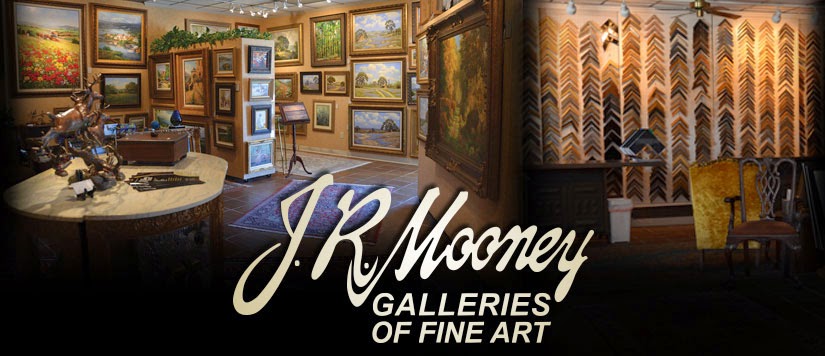|
Wednesday, August 10, 2016
Jay Hester TEXAS- Stories of the Land article in the Spring edition of JRM Quarterly Magazine
New Small Paintings by Margie Barker
JR Mooney Galleries of Boerne is proud to showcase eleven new paintings
by Helotes Texas artist, Margie Barker. However, the first day we
received them in they all SOLD!!! sorry
Ragan Gennusa new giclee at the Gallery
Regan Gennusa giclee ,"Out of the Brush", 24" x 48" , $1,090.00 at JR Mooney Galleries Boerne 830-816-5106 #jrmooneygalleries #regangennusa #cowboy #longhorn #western #hillcountry #cattle #oldwest #boerne #boernetexas
"The Healer", by Jay Hester
by Jay Hester
48" x 60"
Oil on Canvas
This painting and 8 others will be part of the new selections in Jay Hester's solo exhibition:
Jay Hester TEXAS: Stories of the Land
Sources:
“…approached by an Indian Chief to remedy his failing eyesight, Herff diagnosed the problem as advanced bilateral cataracts. Having brought specialty surgical instruments, he set about to remove the opacified lenses. He decided to use cistern water rather than the heavily laden mineral ground water….Artificial light from a lantern or fire would pose a great danger in the use of ether needed for anesthesia, so he reasoned that the operation should occur out-of-doors on a clear day, cloud free, windless, dust and insect free. With the utmost cleanliness, he extracted the cataracts while bystanders wave off flies with palm branches.”
Early Texas Physicians 1830-1915 Innovative, Intrepid, Independent, Texas Surgical Society, Edited by R. Maurice Hood, M.D., Introduction by T.R. Fehrenbach, pg. 177.
“Among the leaders of the new colony called Bettina was one Ferdinand von Herff, a distinguished doctor and student of politics who was a co-founder of the Socialistic Colony and Society, which originally planned to establish socialist communes in Wisconsin. Instead, von Herff and his two co-founders arranged with the Adelsverein to plant their colony on Adelsverein land in Texas. They named the village Bettina after a social activist and friend, and chose a location on the Llano River, northwest of Boerne. It was in Bettina, under an oak tree on the banks of the river, that Dr. von Herff successfully performed surgery to remove a cataract from the eye of a local Indian chief – an almost unheard-of undertaking at the time.”
Explore Magazine, SMV Texas, LLC. A Brief History of Boerne, August 27, 2014, Admin, Accessed on August 8, 2016,
“The two doctors among the Forty proved valuable; though one would surely have been enough. Dr. Ferdinand Herff became accustomed to dealing with the local natives, and eventually learned both the Comanche and Apache dialects. His reputation was made after only a few weeks at the colony, when a Comanche appeared with an advanced case of cataracts, asking to be healed. Herff had – amazingly- brought the most advanced ophthalmologic instruments with him from Germany, and had performed cataract surgery several times in Europe. But never without professional support and, needless to say, never in the wilderness. Fearful that the Comanche would blame him if the native went untreated, Herff decided to risk an operation. Local anesthetics had not been discovered yet, so the doctor was obliged to use ether to incapacitate the patient. This created a problem since, according to Herff, ‘one of the outstanding essential in a cataract extraction is adequate light.’ In those primitive days the only forms of artificial illumination were candlelight and kerosene lamps whose rays were intensified by magnifying lenses. But…the flammable nature of ether definitely constrained its use anywhere near a naked flame, so the only solution was to perform the surgery out of doors, aided by the sunlight…Surrounding the operating group stood a dozen of the Forty with palm leaf fans to keep the flies away…The crude, daring procedure was a success.”
Morgenthaler, Jefferson, The German Settlement of the Texas Hill Country, 2011, Mockingbird Books
The New Artwork of Houston Artist, Jim Hatchett!
|
Subscribe to:
Posts (Atom)




























